Craving variety? Have a look at this place
Why settle for just one garden? This property in Perth has a unique garden for every room of the house.
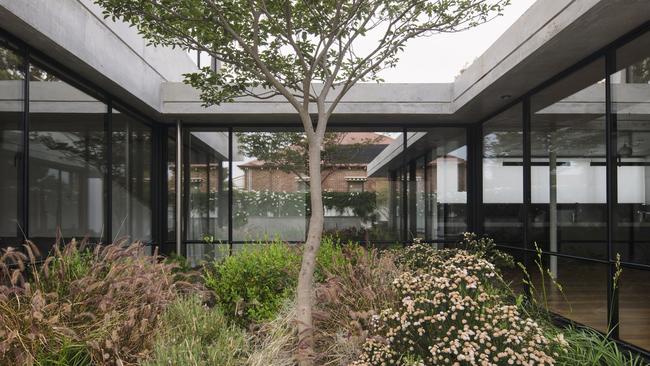
“There’s a unique garden for every room of the house,” says Christina Nicholson, whose planting design surrounds this family home in Perth’s Subiaco.
Completed in 2018, the project merges indoors with out, providing the constant connection with nature that the clients wanted for their four daughters. Architect Beth George designed the extensions to the 1900s home as well as the landscape hard works. The brief to Nicholson included a request for a “pink, fluffy courtyard” and a green cascade from the floating planter box 4m above ground level. For her work, Nicholson, who is principal of Banksia & Lime, won the 2020 Excellence for Gardens Award for WA from the Australian Institute of Landscape Architects.
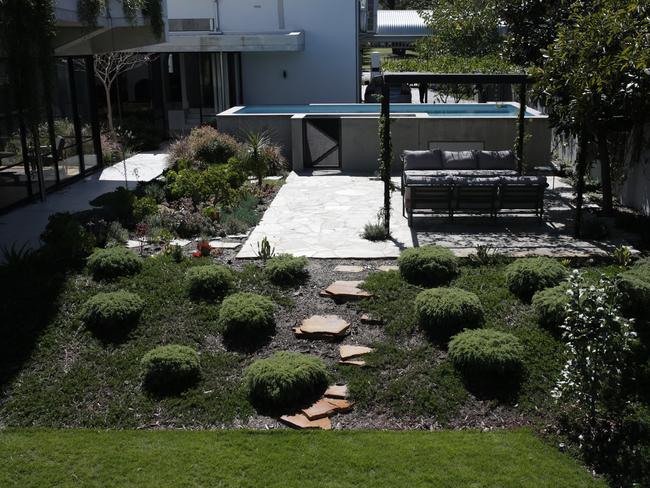
The job was an exact fit for her skill set. “I’m all about biodiverse gardens, particularly using local native species and edible plants in new and unusual arrangements,” she says. As a landscape architect she specialises in sustainable landscapes and also teaches planting and design at UWA School of Design. “I think gardens should be absolutely beautiful, abundant with plants, and useful,” she says.
The series of gardens that connect and flow around the home includes five “sample gardens” of different styles, with specific colour mixes defining each space; more than 70 different species were used. The “pink, fluffy” planting of the central courtyard reflects key pink details of the home’s interiors, using rice flowers (Pimelea ‘Shell Pink’ and ‘Bonne Petite’), dwarf purple foxtail grass (Pennisetum ‘Little Red Riding Hood’), pink lavender (Lavandula ‘Sensation Rose’) and flame pea (Chorizema cordatum) around a pink trumpet tree (Handroanthus heptaphyllus).
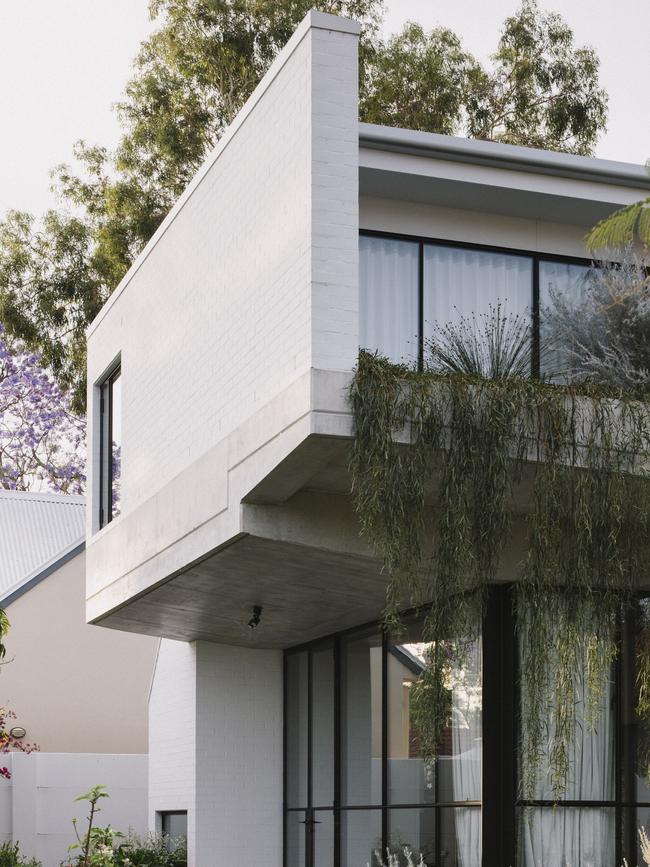
To cascade from the elevated planter bed, Nicholson researched the right plant for months as she drove around Perth, before selecting Acacia saligna ‘Prostrate’. “It had to fall directly down for several metres as well as tolerate wind and sun,” she says of the wattle, which adds seasonal golden colour. The silver-leafed emu bush (Eremophila nivea ‘Spring Mist’) used with it is one of Nicholson’s favourites.
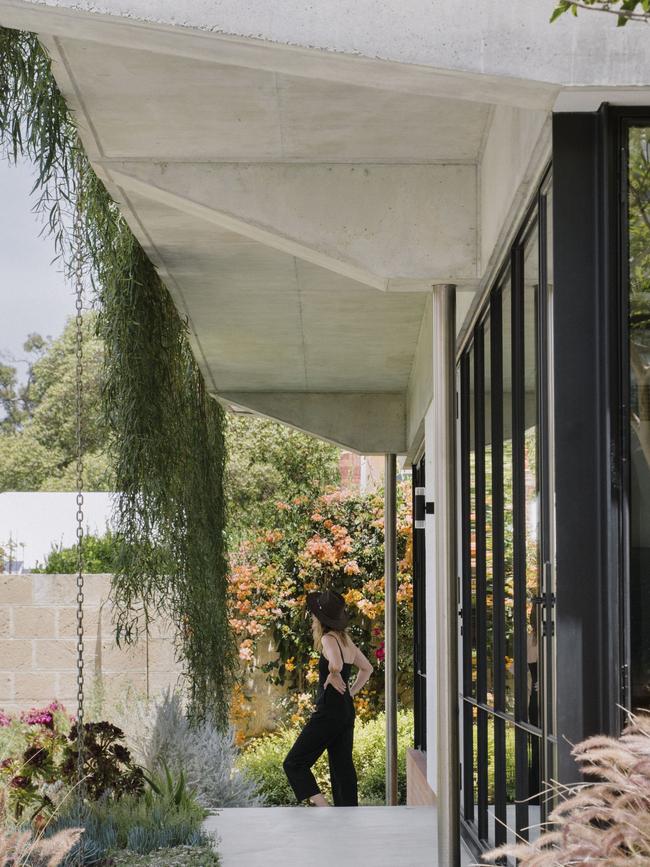
Forming the main view from the master bedroom is a minimalist garden, while the succulent garden features species with grey, blue and purplish foliage tones. The cottage garden was achieved using 80 per cent local species such as Hypocalymma, Dampiera and Prostanthera. “Using local species is my thing,” Nicholson says. “But I’m happy to add other plants, especially if I can’t find a suitable local plant.” Special requests from the client included yellow roses, thornless climbing roses and the moonflower (Ipomoea alba) that smothers the side fence with night-opening, fragrant white blooms. Nearly all the existing trees were kept, as well as the flamboyant mass of orange and crimson bougainvillea on an old limestone wall – Nicholson selected the orange-and-hot-pink flame pea to marry with it.
“The project shows that old and new plantings can be successfully combined in a coherent landscape,” she says. “The garden is much loved and used. Its success came from a close collaboration and mutual respect between client, architect and landscape architect to achieve a combined vision.”
Q&A
Your recent column on maples brought tears to my eyes as we miss the glorious maples at our previous home. Is there any autumn colour tree that can survive our coastal, although sheltered, garden? Paul King, Christies Beach, SA
Chinese pistachio (Pistacia chinensis) should colour well and is tough. The newer, dwarf crepe myrtles reliably colour without cold and provide four seasons of interest. Chinese tallow tree (Triadica sebifera) has excellent colour in warm climates but is considered weedy on the east coast.
I’m searching for a tree identification book, particularly for exotics. The leaf apps struggle to identify within species. Richard Farrar, Sydney
Botanica’s Trees and Shrubs is encyclopaedic, describing 8500 species over 900-odd pages. Ornamental Flowering Trees in Australia by Raymond J. Rowell is a classic textbook, while What Tree is That? by Stirling Macoboy has good pictures for gardeners. None is recent – they may be hard to find and a few plant names will have changed – but I don’t know of any better, newer Australian titles that cover non-natives.
Why are my Magnolia ‘Little Gem’ trees struggling, with spindly bare branches? I’ve used sheep manure, Seasol and woodchips, and acidified the soil. Don Frayne, Perth
These evergreen magnolias need ample, regular water to look lush. They get spindly if too dry or shaded. Prune in early spring, and behind spent flowers in summer, to promote bushy growth. To hold water, Perth’s sandy soils need work: try Bentonite clay, organic matter, Soil Solver and Sand Remedy. Seasol and manures are good but probably not enough.
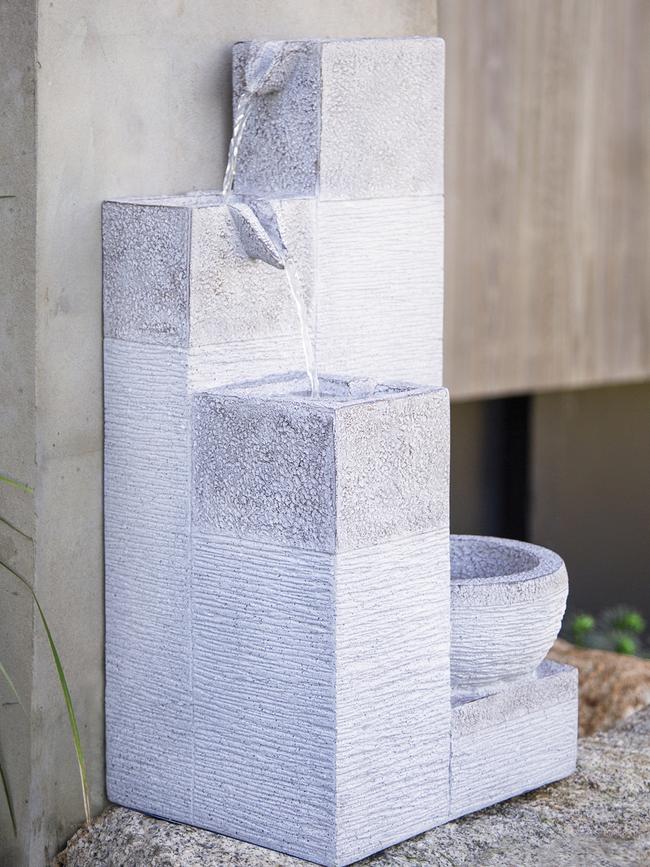




To join the conversation, please log in. Don't have an account? Register
Join the conversation, you are commenting as Logout